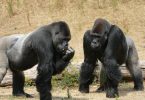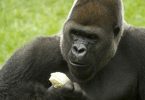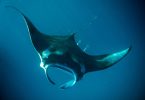Species of anacondas are semi aquatic snakes that are mostly found in the tropical areas and places like South America. The anaconda is basically the heaviest species of snake in existence with a great ability to swim that so many other species of snake do not have. However, this aquatic reptile belongs to the genus of eunectes, that is a genus of boa which in Greek etymologically means good swimmer.
More so, there different species which will be briefly discussed in this article. Some of these species of anaconda include the following: the green anaconda, the yellow also known as the Paraguayan anaconda, the dark-spotted anaconda and the Beni also known as the Bolivian anaconda.
These species can be easily identified by their geographic range, their sizes, and their genetic makeup. Actually, when most people talk about the anaconda, it is the green anaconda that is being referred to.
Also, the species of anaconda play very significant roles in the myths of the people of South American where they are said to have appeared to be taken different shapes just like shape shifters, they are also considered as the maker of water, as very vicious human eaters, and they are also regarded to be magical as well as spiritual beings with great healing abilities.
There are records of Anacondas having being about one hundred feet, which is about thirty meters. This record has not been verified by science, but chances are that they might be true, given that the scientific fiction movies display that, and if they do then it increases the chances that the movies although fiction were in some way informed involved by a reality.
Physical characteristics
Like we established earlier, to share the details of the size of the anaconda, it is necessary that we look at it through the different species of the anaconda. However, before we proceed into that, it is important to have a general idea of the general physical descriptions of the different species of anacondas because despite their differences, they have a few things in common which we will be sharing.
The different species of anaconda are muscular, stocky, and are thicker than the other species of great swimmers. This species of big snakes has large heads that are narrow and rest on their very thick necks. More so, the different species of anacondas have their nostrils and pair of eyes positioned on the top of their heads, which allows the different species of the big snake to see beyond the surface of the water, while its entire body lays low in the water.
Anacondas have a very thick stripe that runs from its eye through its jaw; and the colour of this thick stripe is black. The species of anaconda have very smooth scales that are small, but grows bigger towards the posterior part of their bodies. More so, the skin of the different species of anaconda has a reputation of being soft as well as loose, that it has the ability to absorb a lot of water.
Also, they have spurs on their scales, and the spurs are near the region of their cloacal. The male sex of different species of anaconda usually has spurs that are larger than the spurs of the female sex of the different species of anaconda.
However, the females of different species of anaconda are usually the longer and the bigger species of the big snake, as they are bigger than the females. It is also important to establish as a fact, that the various species of anaconda exhibits the biggest sexual dimorphism and that of all the tetrapod species, the female anaconda being the biggest.
The colour and the size of different species of anaconda is largely dependent on the species of the anaconda. The various species of anaconda are either brown, green, and even yellow in colour with spots and palettes that help them to blend into the areas of the tropical rainforests and tropical rivers.
Different species of the anaconda and their sizes
Green anacondas
The green species of anaconda have any of the following colours; olive colour, the green colour with shades of gray, and the green colour with some shades of brown, which accounts for it is called the green anaconda.
More so, the different species of anaconda has a spot that takes the shape of an egg, and is on the middle of the posterior back of its body; this spot is either brown in colour or black in colour as the case may be. Also, the sides of the various species of anaconda are sometimes yellow in colour instead of green which has given it its name. it also has spots that have taken the shape of egg with yellow at its center.
The length of the Green species of anaconda is surrounded by controversy. This is largely because it is not easy to measure the length of green species of anaconda as it is difficult to stretch out the anaconda, and attempting to stretch it out could put the captive anaconda in harm’s way.
More so, a dead anaconda could be stretched out at length, an anaconda looks bigger than the others when it has just fed than the one that is yet to feed. Again, people who have seen the green species of anaconda have the tendencies to exaggerate what they have seen as a result of fear. So, since anacondas stretches even at its death, the historical samples may not be accurate, and since the anaconda is bigger when it has fed, it really will not be easy to get its size.
National geographic has stated that the longest verified length of the green species of the anaconda is about thirty feet, which is about nine meters. The Guinness book of world records says the longest snake which is a regulated python is about twenty-five feet, or seven point six meters. This conflict in reports makes it difficult to reach a conclusion regarding the size of the green anaconda.
However, there is a range that can be derived from the different records. Because we are concerned with giving you the right information it is safe to say that the size of the green species of the anaconda ranges from about fifteen feet to about thirty feet. That is to say that the minimum length of the green species of the anaconda is fifteen feet, and a maximum of thirty feet for the female. While that of the male is between nine feet and twenty-five feet.
Unlike the length of the green anaconda, there is a clearer record for the weights of the green species of the anaconda. The weight of the green species of the anaconda is about five hundred and fifty lbs.
Generally, the different species of anacondas inhabit South America, the east of the Andes. However, the green species of anacondas are predominant in the following areas: Bolivia, Brazilian Amazon basin, Colombia, Ecuador, the Orinoco basin, the Guianas, Peru, Trinidad and Venezuela.
Yellow anacondas
The yellow species of anacondas derives its name from its colour; so the colour of the yellow anaconda includes the following: the yellow colour, the golden colour with some shades of tan, the yellow colour with some shades of green.
So clearly you see how the name yellow came about. It also has some spots, streaks, dorsal bands, and blotches that are basically dark brown in colour or black in colour. Each of the yellow species of the anaconda has a pattern that is peculiar to it. They usually have the bottom of its tail marked or covered in scales that are usually black and yellow in colour. There is no much controversy about the size of the yellow species of anaconda. On an average, the length of the yellow species of the anaconda is about nine feet.
Yellow anacondas predominantly inhabit Bolivia, southern Brazil, Paraguay, and north east Argentina.
Beni or Bolivian anacondas
The beni or bolivian anacondas were usually considered to be a part of the species of the green species anaconda, until scientist without much details stated that the beni anacondas are different species. So far, all that is known about the beni or bolivian species of anaconda is tied to the details of the green species of the anaconda. Hence, there is no new knowledge of the bolivian species of the anaconda so its size until stated otherwise is that of the green anaconda.
The beni or bolivian species of anaconda is mostly found in a part of bolivia.
Dark-spotted anacondas
The dark spotted species of anacondas is best identified by its colour. Like the name implies the dark spotted species of anaconda is brown in colour, and has black coloured spots as well as dark brown coloured spots all over its body. The length of the dark spotted species of the anaconda is about nine feet.
The dark-spotted species of anaconda predominantly inhabits Brazil as well as the French Guiana.
Behavioral Habits of The Species of Anaconda
The different species of anacondas are mostly active during the early hours of the evening and at night fall. The enormous sizes of the different species of anacondas makes it difficult for them to move on land, so they best on water and tropical rainforests or swampy places.
More so, the different species of the large snake anaconda are solitary snakes as they like to be on their own patrol. However, the green species of anacondas are territory markers, they like to mark their home and stay in their home. They have very adaptive features, and as snakes that inhabit grasslands, the green species of the anaconda sometimes bury itself in mud and stays very dormant during the dry season.
Conservation and Endangerment Status
Judging from the threat that the different species of the large snake the anacondas pose, they are prone to being endangered. However, the anaconda species are not in any way or place endangered.
This is basically because humans avoid it other humans often kill it at sight as a result of the fear of human ingestion (the fear of being swallowed by the large snakes that is the anaconda). On the contrary, some animal scientists are saying that human ingestions are not necessarily going to happen because humans do not share a territory with the large snakes, and that humans have no need to kill any species of the anaconda.
The only possible threat that can endanger the lives of the different species of the large snakes anaconda, is the loss of their homes, territory, or habitats to deforestation. This is because there is an increase in the felling of trees and forests.
Do Anacondas feed on humans?
Whether the different species of anacondas feed on humans or not is not fully open to controversy because there are myths that anacondas fed on humans. This gives them the status of legendary human eaters.
However, it is agreed that the species of anacondas precisely the green species of the anaconda feed on animals that are way bigger and stronger than humans, so chances are that it could also ingest humans.
Feeding Habits and Diet of the Species of Anaconda
The species of anacondas, just like other boas, do not have any venom and are strong constrictors. As a nocturnal the anaconda hunts for its preys by night; the anacondas usually lay low in the rivers by the banks, where they appear to be hiding in wait for an unsuspecting prey.
As soon as a prey appears, the anaconda attacks with their sharp curved teeth and apply the technique of constrictive killing. The constrictive killing method is the method of squeezing the prey till it loses its breathe as a result of no blood flow in its system.
So, the prey dies of ischemia because there is no flow of blood to the brain. Because this killing happens mostly in water, the preys also die from drowning.
As soon as the prey is assumed or perceived dead, the species of anacondas swallow it without dissecting. The large snakes have a quite huge, ligament that is unfused and is on each side of its mandibles, as well as its mobile joints in its jaws which helps them open up their jaws as wide as it is needed for him to swallow up his prey.
Also, anacondas have a stretchy body that makes it easier for them to swallow their prey and enjoy their dinner. More so, the different species of anacondas do not feed for up to a month once they have eating.
However, they are usually on the top of the food chain in their ecology system because in a bid to kill bigger preys like deer and jaguar, they often get really injured that they sometimes get to die and are food for the other living animals. It is important to know that sometimes the female anacondas swallow the male anacondas.
Reproduction and lifespan
When it is spring time, the female species of anaconda often leaves a trail of scent or even emits an airborne chemical in order to attract the males to themselves. While the female anacondas stay in a place, the males travel the distance to come and meet them and they pick scents by sticking out their tongues.
However, when the different species of anaconda are ready to mate, they do so in the water or near the water. They form some breeding balls, and a very huge snake swarms that has a group of male anacondas wrestling for a chance to mate with the female specie of anaconda.
These breeding ball can last for a period of four weeks. There are still sometimes that the female anacondas had to just choose between the males given that the female anacondas are stronger and larger than their male counterparts. More so, female anacondas in that season could mate with so many other male anacondas.
Anacondas are members of the aquatic family that belong to the boa family. As members of the boa family, the different species of the anaconda give live birth. The embryos are attached to a sac of yolk and are surrounded by a membrane and when it is time for the baby anacondas to be born, they break through the membrane and once they are born, after pushing through the cloaca. However, ones they are born the adult anaconda does not care about them especially because they are usually born with instincts that help them to survive.
Female anacondas for a period of lifetime have about twenty-nine babies, while the smaller ones do not have up to that number of babies.
Different species of anacondas attain sexual maturity between the period of three and four years of age. While in the wild, the different species of anaconda live for up to ten years, but when in captivity, the different species of anacondas can live up to about thirty years.







